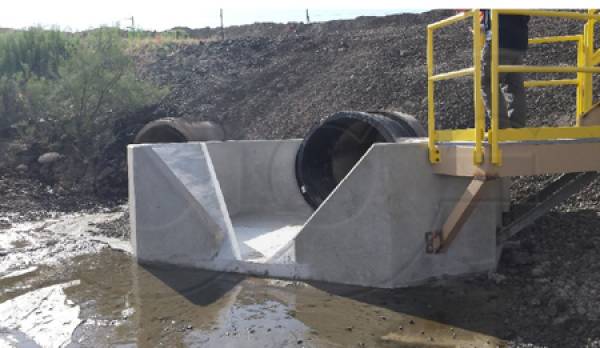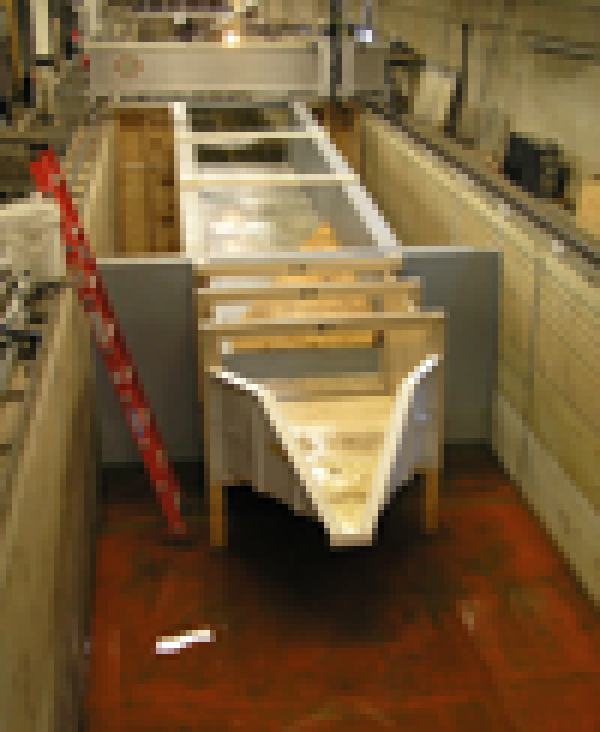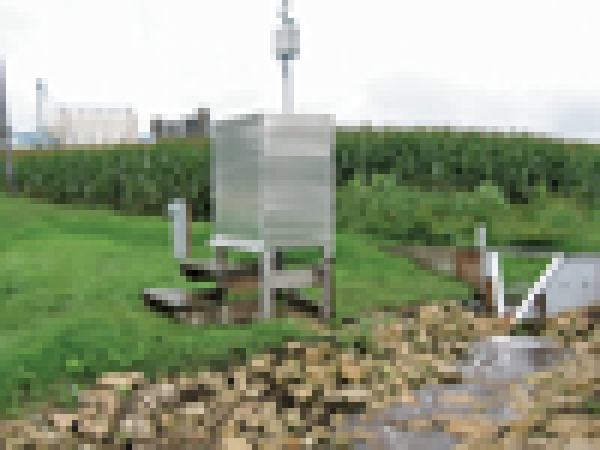This website uses a variety of cookies, which you consent to if you continue to use this site. You can read our Privacy Policy for
details about how these cookies are used, and to grant or withdraw your consent for certain types of cookies.
H Flume Maintenance
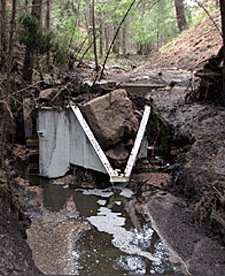 The H series of flumes have shown themselves to be excellent at monitoring flows in irrigation channels and even industrial discharges. One of the reasons that H flumes work so well is their ability to pass solids. Another advantage of H flumes is their ability to accurately measure low flows due to their V-notch shaped discharge. This is not to say, though, that H flumes pass all solids or require no maintenance.
The H series of flumes have shown themselves to be excellent at monitoring flows in irrigation channels and even industrial discharges. One of the reasons that H flumes work so well is their ability to pass solids. Another advantage of H flumes is their ability to accurately measure low flows due to their V-notch shaped discharge. This is not to say, though, that H flumes pass all solids or require no maintenance.
Like all flumes, H flumes have their limitations.
Flat Flume Floor
The flat floor of the H-flume allows it to ready to pass sediment and debris – even at low flows. This contrasts with RBC and Palmer Bowlus flumes where the ramp in the throat of allows sediments, debris, and other solids to drop out in the upstream section of the flume (potentially causing a maintenance issue and affecting the flow readings).
The ability to pass solids is particularly useful when applying the flume to measuring flows in storm water, field / plot runoff, and irrigation applications.
This is not to say that H flumes are immune from needing periodic inspection and cleaning as is sometimes though. While the flat floor of the flume does pass sediment and debris well, at very flows sediment can drop out of the flow stream and accumulate in the flume or approach section. When this happens the flume (or approach section) must be cleaned, otherwise the flow will channelize through the sediments, which in turn presents a poor velocity profile across the face of the discharge of the flume.
The H flume below shows sediment and debris that has accumulated in the approach and flume itself. This accumulation was caused by erosion of the upstream channel after a forest fire.
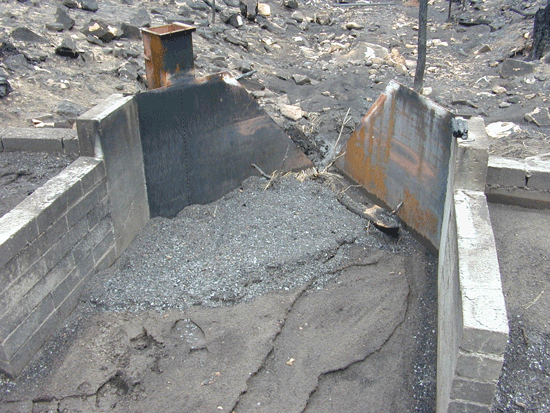
While no flume should be expected to operate under these conditions, it is illustrative of the fact that large influxes of sediment may result in accumulation. Large storm events can occasionally carry similar amounts of debris. H flumes experiencing such events should be checked for accumulations and potential blockages. This is particularly true when the H flume has a stilling well as blockage of the inlet port will result in erroneous flow / level readings.
V Shaped Flume Discharge
The ability to accurately measure low flows is a direct result of the unique shape of the H flume’s discharge. More of a reclined V-notch (akin to a weir), the discharge of an H flume narrows dramatically as it approaches the flume’s floor. As the sidewalls in the flume rise, the V-notch expands quickly. This expansion usually means that larger debris that is stopped by the lower portion of the V-notch is allowed to push through the upper portion as the flow increases.
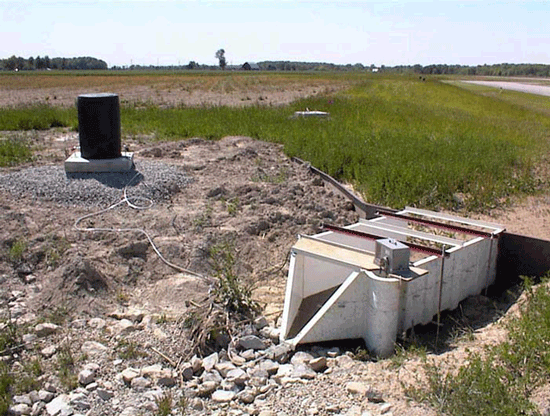
This is, however, not always the case. In certain situations where the solids are both large and heavy or malleable, they may wedge in the lower portion of the discharge of a H flume in such a way that even as flow backs up behind the obstruction, the solid / debris does not push through or over the discharge of the flume.
Sanitary flows are particularly troublesome and HS flumes should not be used on them as a result. As for H flumes, the 0.5-Foot H can handle flows with some portion of sanitary solids, but they should not be used on flows solely containing them. In those applications, a Montana flume may be a better choice.
Related Blog Posts
Explore more insights in our blog.

LOCATIONS IN ATLANTA, GA & BOISE, ID



